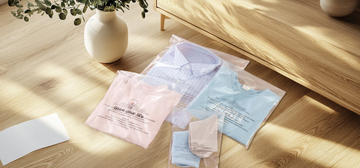I know that when you purchase protective packaging for your store, you carefully evaluate your options, aiming to find the most cost-effective solution. After all, cutting costs contributes directly to your profits. However, even with thorough consideration, there’s a chance you might overlook some important aspects. That’s why we’re here to highlight five common mistakes and provide simple ways to avoid them, so you can keep your customers happy and your products safe!
1. Overpacking or Underpacking Products
Finding the balance between too much and too little packaging can be a good concern. Overpacking wastes materials, increases shipping costs, and is not eco-friendly. On the other hand, underpacking leaves your products vulnerable to damage during transit.
What Does This Look Like?
Overpacking: Wrapping fragile items with excessive bubble wrap and stuffing them into oversized boxes.
Underpacking: Shipping electronics without enough cushioning, which leads to broken items and unhappy customers.
How to Avoid It:
· Choose packaging materials that are suitable for your products and within your budget.
· For small, non-fragile items, try lightweight options such as poly mailers and cellophane bags. For fragile items, add protective layers such as bubble wrap or foam inserts.
· Use tools like packaging calculators to find the perfect fit for your products.
2. Not Testing Protective Packaging Solutions
Many businesses skip the testing phase, only to discover that their packaging does not hold up during shipping. This can lead to damaged goods and unhappy customers.
What Does This Look Like?
· Packages that split open during transit.
· Fragile items breaking because the cushioning was not sufficient.
How to Avoid It:
· Test your packaging in real-world conditions by conducting drop tests, compression tests, and temperature or humidity simulations. You can ask for a sample before purchasing. At IMailer, we offer free samples for your convenience. Call at +86 13811605819 or email our customer service team to get more information.
· Pay attention to customer feedback. It provides valuable insights into how your packaging performs.
3. Neglecting Material Quality
Using low-quality materials can backfire. Thin or flimsy materials might tear or fail to protect your products, leading to damage and frustration for your customers.
What Does This Look Like?
· Poly bags that tear open during shipping, exposing products.
· Bubble wrap that deflates and no longer cushions fragile items.
How to Avoid It:
· Knowing a little about packaging materials can help you tell if they are good or bad. Most packaging bags are made from a few common materials, but some suppliers still make low-quality ones. Good-quality bags don’t smell much or have no smell at all. If a bag smells very strong, it might be made with too many recycled materials or cheap ingredients. High-quality bags are hard to tear, but low-quality bags can rip easily, which isn’t good for keeping products safe during shipping.
· Before purchasing, carefully check the rates of the companies you are considering, including reviewing product materials, thickness, positive ratings, genuine reviews, and whether the negative reviews are acceptable, to ensure you make an informed decision.
4. Neglecting the Seal Method
When purchasing packaging, it is easy to focus on material, size, and thickness while overlooking how the package is sealed. A seal that is too tight or difficult to open can frustrate customers.For high-value products, you should pay particular attention to this issue because, when you purchase something expensive, you expect a smooth unboxing experience. For low-value products, however, customers will have lower expectations.
How to Avoid It:
· Product ratings are the most straightforward way to check if the seal method is satisfactory. If your products require strong sealing, choose manufacturers with high ratings in this area.
5. Failing to Review and Update Packaging Strategies
Packaging needs evolve over time, but businesses often fail to revisit and improve their strategies. There is no once and for all method when it comes to packaging. Outdated packaging methods can lead to inefficiencies, increased costs, and a mismatch with customer expectations.
Why is this important?
· Businesses may introduce new products or update existing ones, requiring different packaging sizes or materials. This requires changed packaging.
· Packaging market is changing at the same time. Keep an eye on the packaging market helps you know new packaging trends or more cost effective packaging solutions.
· What’s more, during important festivals such as Thanksgiving or Christmas, updating packaging strategy can be crucial for businesses that care for marketing. Special packaging can attract more attention and leave a lasting impression on customers.
How to Avoid It:
· Customer reviews are the most straightforward way to check if your packaging is good or not.
· In addition, your inventory stuff knows this most clearly, ask their opinions may give you a new perspective.
· Stay updated on industry trends, such as biodegradable or reusable packaging options.
Tips for Satisfying Protective Packaging
Creating packaging that protects your products and delights your customers is easier than you might think. Here are a few ideas to help you stand out:
1. Custom Printing for Branding and Personalization
Custom-printed packaging turns your box or bag into a walking advertisement. It is a great way to reinforce your brand and create a memorable unboxing experience.
· How to Do It:
Add your logo, tagline, or design to your packaging.
Use QR codes that link to your website, social media, or a thank-you message.
Consider eco-friendly printing methods to appeal to sustainability-minded customers.
Customize your packaging with professional packaging company. Leaving professional tasks to professionals is the most cost-effective approach. However, remember that good communication is a necessary condition for effective collaboration.
COME TO iMAILER AND BECOME A PARTNER
2. Add Handwritten or Handwritten-like Notes for a Personal Touch
A personalized note makes customers feel appreciated. It shows that there is a real human behind the business. Besides, there will be customers who post these cute and beautiful cards in their product reviews. This will serve as free advertising for your products and add a friendly touch to them. Isn’t this great?
· How to Do It:
o You can include a thank-you card with a handwritten-style font if manual notes are not practical.
o You can tailor the message for the season or the product purchased. For example, during holidays, add a festive greeting.
o If possible, you can mention the customer’s name to make the note even more special.
3. Focus on Functional and Aesthetic Balance
· You can choose materials that are both durable and attractive.
· You can use color-coordinated fillers or tissue paper to make your packaging pop.
4. Optimize for Sustainability
· It’s recommanded that you opt for recyclable, reusable, or biodegradable materials whenever possible.
· You can use packaging that customers can easily repurpose, such as resealable poly bags.
5. Collect Feedback and Continuously Improve
· It’s not hard to add a feedback card asking customers to share their thoughts about your products.
· Therefore, you can use their insights to tweak and improve your packaging strategy over time.
Conclusion
Protective packaging is not just about keeping products safe—it is an opportunity to impress your customers and showcase your brand. By avoiding these six common mistakes, such as neglecting material quality, seal methods, and testing, you can ensure your packaging is practical, attractive, and memorable.
Take a moment to review your current packaging strategy. If you are ready to upgrade, IMailer offers a wide range of protective packaging solutions that combine functionality, sustainability, and style.Explore IMailer’s collection of poly bags, bubble mailers, and custom packaging options.Contact our team today for expert advice tailored to your business needs.





